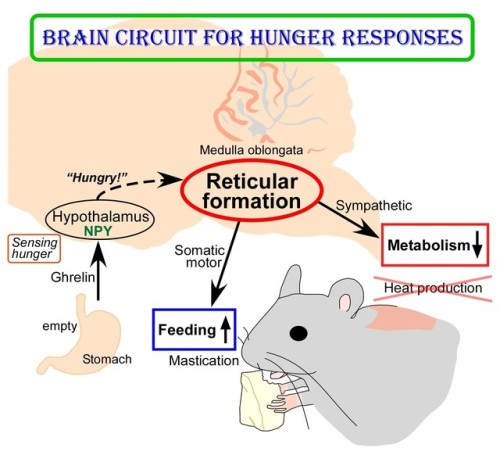Bruh This Is Some Sci-fi Shit. Fucking Time Crystals

Bruh this is some sci-fi shit. Fucking time crystals
More Posts from Science-is-magical and Others
The Brain Can Reveal Drinking Status Even After Death
Scientists who use postmortem brain tissue to study alcohol’s effects on brain structure and function will find this research interesting. Phosphatidylethanol (PEth) is an alcohol metabolite and its concentration in whole blood samples is a biomarker of drinking habits. For this study, scientists examined PEth levels in postmortem brains of individuals known to have had alcohol use disorders (AUDs).
Researchers divided 30 postmortem brains into three groups: 10 with AUDs that had positive serum alcohol levels present at the time of autopsy; 10 with AUDs that did not show positive serum alcohol levels at the time of autopsy; and 10 normal brains. PEth levels were measured in the cerebellum and orbital frontal cortex (OFC) regions.
Results showed that PEth was present in the cerebellum and OFC of all brains in all three groups of subjects, including the controls. The AUD group with detectable serum alcohol levels at the time of autopsy had much higher levels of PEth in both brain areas than either the control group or the AUD group whose subjects did not have detectable serum ethanol at autopsy. Thus, the ability to measure PEth levels in postmortem human brains can be helpful in classifying drinking status in individuals with AUDs at the time of death.

One of the best ways to get people to do something is to make it fun. A marketing campaign called ‘The Fun Theory’ found that when stairs next to an escalator were turned into giant, functional piano keys, the amount of people who took the stairs increased 66%, and when a trash can had sound effects that made it seem infinitely deep, people started picking up and throwing away litter just to hear it. Source

(Image caption: The empty stomach releases the hormone called ghrelin. By receiving ghrelin, the hypothalamus in the brain senses hunger and produces “hunger signaling” through the action of neuropeptide Y (NPY). The hunger signaling activates neurons in the reticular formation of the medulla oblongata, which then inhibit sympathetic output to reduce metabolic heat production and simultaneously provide masticatory motor rhythm to facilitate feeding. Credit: © 2017 Yoshiko Nakamura)
New Insights into Brain Circuit for Hunger Responses during Starvation
The human body responds to starving conditions, such as famine, to promote the chance of survival. It reduces energy expenditure by stopping heat production and promotes feeding behavior. These “hunger responses” are activated by the feeling of hunger in the stomach and are controlled by neuropeptide Y (NPY) signals released by neurons in the hypothalamus. However, how NPY signaling in the hypothalamus elicits the hunger responses has remained unknown.
Sympathetic motor neurons in the medulla oblongata are responsible for heat production by brown adipose tissue (BAT). Researchers centered at Nagoya University have now tested whether the heat-producing neurons respond to the same hypothalamic NPY signals that control hunger responses. They injected NPY into the hypothalamus of rats and tested the effect on heat production. Under normal conditions, blocking inhibitory GABAergic receptors or stimulating excitatory glutamatergic receptors in the sympathetic motor neurons induced heat production in BAT. After NPY injection, stimulating glutamatergic receptors did not produce heat, but inhibiting GABAergic receptors did. The study was reported in Cell Metabolism.
“This indicated that hypothalamic NPY signals prevent BAT thermogenesis by using inhibitory GABAergic inputs to sympathetic motor neurons,” study lead author Yoshiko Nakamura says.
Retrograde and anterograde tracing with fluorescent dyes revealed which brain region provided the inhibitory GABAergic inputs to heat-producing motor neurons.
“Tracing experiments showed that sympathetic motor neurons are directly innervated by GABAergic inputs from reticular nuclei in the medulla oblongata,” corresponding author Kazuhiro Nakamura explains, “selective activation of these GABAergic reticular neurons inhibits BAT thermogenesis.”
The researchers’ further findings showed that GABAergic inputs from medullary reticular neurons are involved in hypothalamic NPY-mediated inhibition of heat production in BAT. This hunger response circuit probably explains why anorexic individuals suffer from hypothermia.
Interestingly, stimulation of these medullary reticular neurons prompted rats to begin chewing and feeding. This effect was similar to injecting NPY into the hypothalamus, suggesting that hypothalamic NPY signaling activates reticular neurons in the medulla oblongata to promote feeding and mastication during the hunger response.
Abnormal activation of these neurons under non-starved conditions may contribute to obesity. Understanding these mechanisms could lead to development of more effective treatments for obesity.

It’s #InternationalKissingDay! Here’s some topical lipstick chemistry. More info/high-res image: http://wp.me/s4aPLT-lipstick
-
 juno-r1 liked this · 7 years ago
juno-r1 liked this · 7 years ago -
 inkweaver326 liked this · 8 years ago
inkweaver326 liked this · 8 years ago -
 queen-gorgo liked this · 8 years ago
queen-gorgo liked this · 8 years ago -
 iwontcareifyouwont reblogged this · 8 years ago
iwontcareifyouwont reblogged this · 8 years ago -
 eclectic-like-furniture reblogged this · 8 years ago
eclectic-like-furniture reblogged this · 8 years ago -
 spiderman3blacksuittheme reblogged this · 8 years ago
spiderman3blacksuittheme reblogged this · 8 years ago -
 spiderman3blacksuittheme liked this · 8 years ago
spiderman3blacksuittheme liked this · 8 years ago -
 patterncrystal reblogged this · 8 years ago
patterncrystal reblogged this · 8 years ago -
 science-is-magical reblogged this · 8 years ago
science-is-magical reblogged this · 8 years ago -
 goldencocoabutter liked this · 8 years ago
goldencocoabutter liked this · 8 years ago -
 psychiclianna liked this · 8 years ago
psychiclianna liked this · 8 years ago -
 cuban-feminist-that-gives-a-hoot liked this · 8 years ago
cuban-feminist-that-gives-a-hoot liked this · 8 years ago -
 singintomyself liked this · 8 years ago
singintomyself liked this · 8 years ago -
 woulfesbane reblogged this · 8 years ago
woulfesbane reblogged this · 8 years ago -
 byronew liked this · 8 years ago
byronew liked this · 8 years ago -
 tumblingtumblertime liked this · 8 years ago
tumblingtumblertime liked this · 8 years ago -
 penarrow101 liked this · 8 years ago
penarrow101 liked this · 8 years ago -
 fsupinski liked this · 8 years ago
fsupinski liked this · 8 years ago -
 unprincesse reblogged this · 8 years ago
unprincesse reblogged this · 8 years ago -
 adorerbati liked this · 8 years ago
adorerbati liked this · 8 years ago -
 derpeyz-blog liked this · 8 years ago
derpeyz-blog liked this · 8 years ago -
 thehybridwarrior reblogged this · 8 years ago
thehybridwarrior reblogged this · 8 years ago -
 thehybridwarrior liked this · 8 years ago
thehybridwarrior liked this · 8 years ago -
 chattrboxx liked this · 8 years ago
chattrboxx liked this · 8 years ago -
 eyedrscott liked this · 8 years ago
eyedrscott liked this · 8 years ago -
 shrestharoy reblogged this · 8 years ago
shrestharoy reblogged this · 8 years ago -
 bschoo liked this · 8 years ago
bschoo liked this · 8 years ago -
 preciousjgdeleon liked this · 8 years ago
preciousjgdeleon liked this · 8 years ago -
 semiperishable liked this · 8 years ago
semiperishable liked this · 8 years ago -
 musingsofthematriarch liked this · 8 years ago
musingsofthematriarch liked this · 8 years ago -
 roy-biv liked this · 8 years ago
roy-biv liked this · 8 years ago -
 newone2010 liked this · 8 years ago
newone2010 liked this · 8 years ago




















